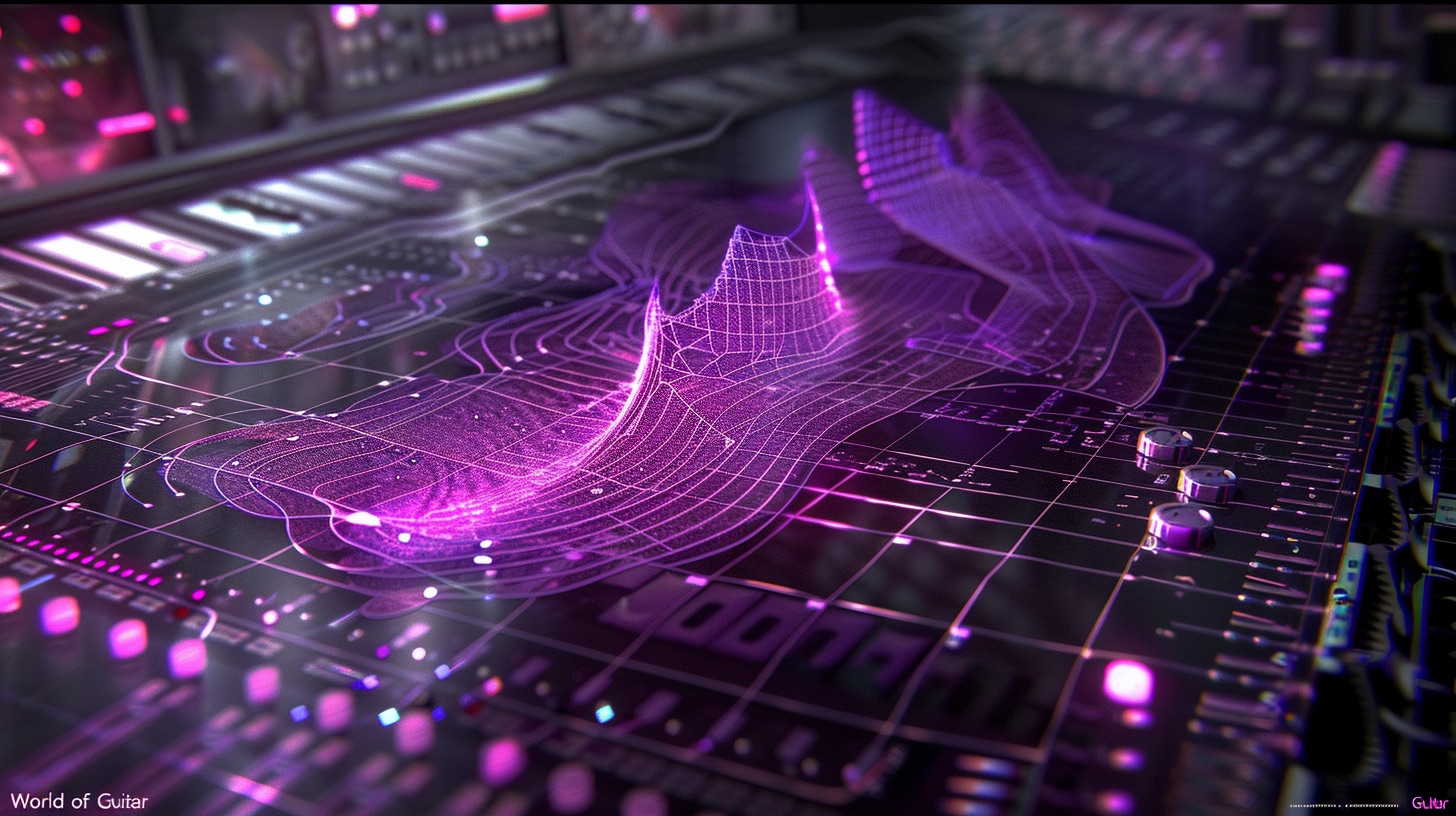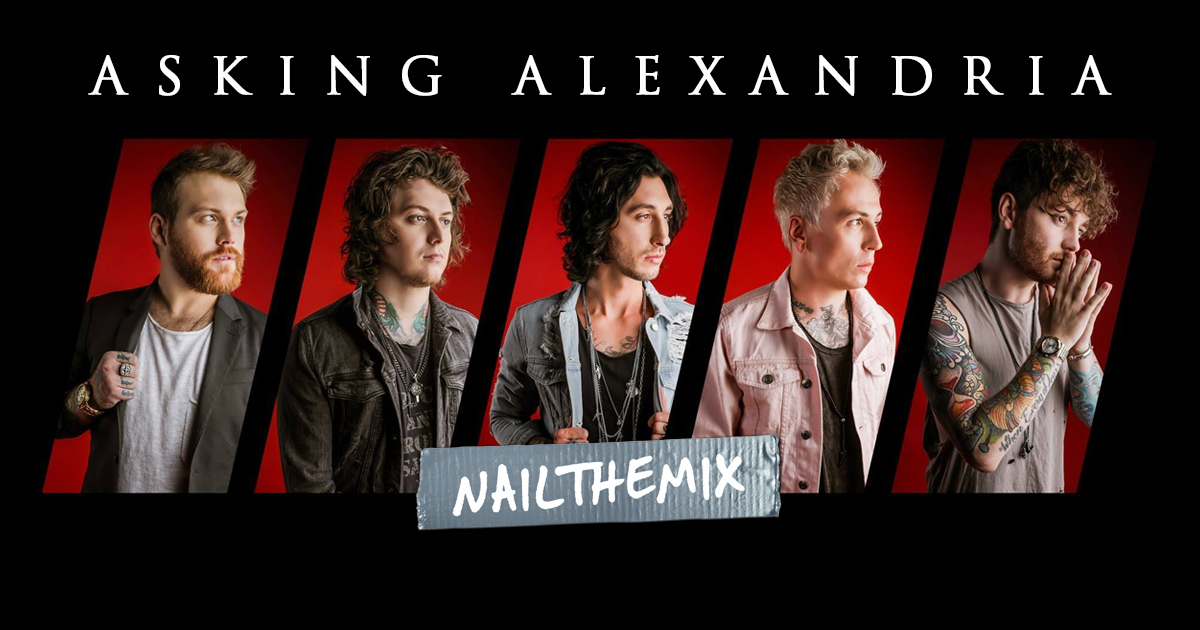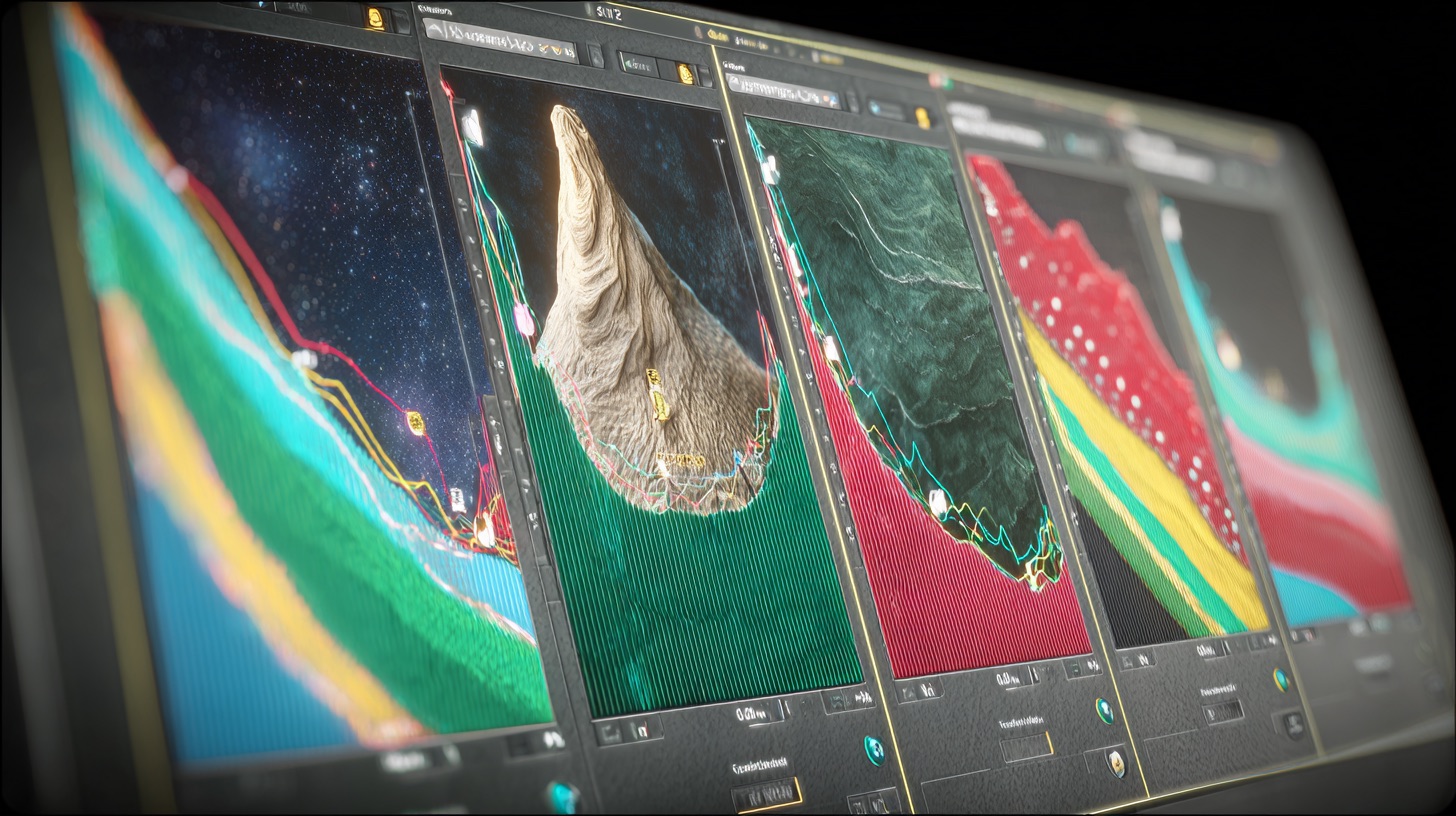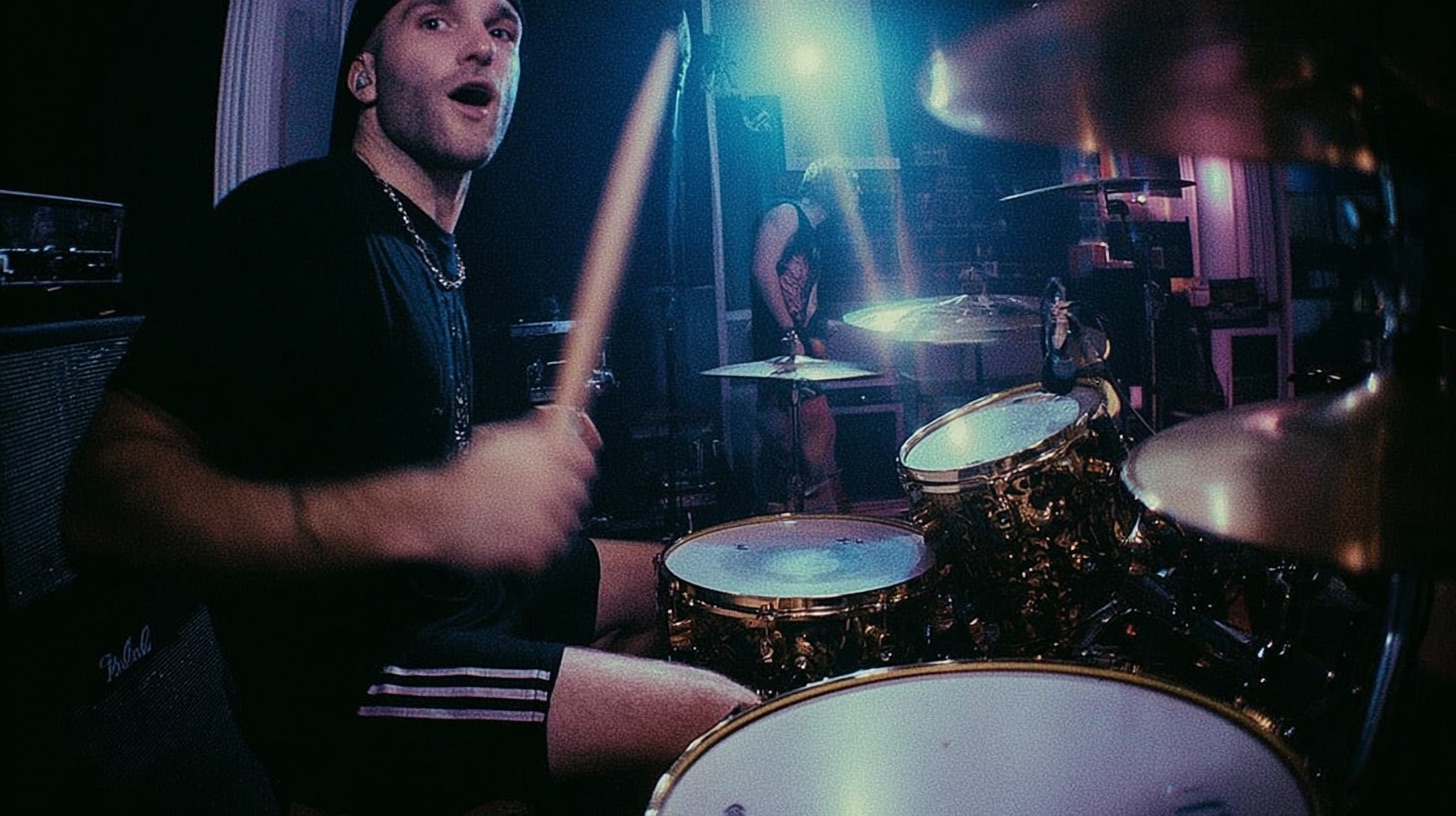
Diminished Chord Guitar: Darken Your Modern Metal Riffs
Nail The Mix Staff
Diminished chords. Just the name sounds a bit… off, right? And that’s exactly why they’re such a potent weapon in the modern metal producer’s arsenal. If you’re looking to inject some serious tension, unease, or just downright evil-sounding spice into your tracks, learning how to wield diminished chords on guitar – and how to make them punch in a mix – is essential. Forget just sticking to power chords; the modern metal landscape demands more.
We’re talking about a scene where bands like Periphery, Meshuggah, and Spiritbox are pushing harmonic boundaries, drawing from a crazy range of influences. The bar for production is sky-high, and the musicianship is off the charts. Diminished chords are part of that evolution, offering a way to add sophisticated darkness that, when produced right, sounds absolutely massive. Let’s dive into how to use these dissonant beasts and make them shine (or, you know, glower menacingly) in your productions.
What Even Are Diminished Chords? (A Quick Refresher)
Before we get into the metal applications, let's quickly break down what we're dealing with. No need for a full-blown theory lecture, but understanding the basics helps.
The Formula: Building Blocks of Dissonance
A basic diminished triad is built with a root note, a minor third (three semitones above the root), and a diminished fifth (six semitones above the root).
- For example, a C diminished triad (Cdim) is C – Eb – Gb.
Things get even spicier with the fully diminished seventh chord (often just called a "diminished chord" in shorthand). You take that diminished triad and add a diminished seventh (which is nine semitones above the root, or effectively a major sixth interval but thought of as a lowered seventh).
- So, C diminished seventh (Cdim7 or C°7) is C – Eb – Gb – Bbb (which is enharmonically an A).
A key characteristic of fully diminished seventh chords is their symmetry: every note is a minor third apart from the next. This means a Cdim7 is also an Ebdim7, a Gbdim7, and an Adim7 (or Bbbdim7) – they contain the same notes!
The Vibe: Tension, Dissonance, Evil
Sonically, diminished chords scream TENSION. They feel unstable, like they need to resolve somewhere. This inherent instability makes them perfect for creating dark, unsettling, or suspenseful atmospheres. Think the soundtrack to a horror movie or the intricate, unsettling passages in progressive metal.
Why Diminished Chords Kick Ass in Modern Metal
Okay, theory aside, why should you, a modern metal producer, care about these weird chords? Because they open up a ton of creative possibilities that fit perfectly with where metal is heading.
Creating Unsettling Atmospheres
This is the most obvious one. Want to make a riff sound instantly more menacing or foreboding? Sprinkle in some diminished voicings. Bands in black metal, death metal, and even some flavors of doom have been using this trick for ages to craft truly dark soundscapes. Think of the chilling interludes or dissonant counter-melodies that give you goosebumps. That’s often the power of diminished harmony at play.
Adding Harmonic Spice and Complexity (Prog Metal Influence)
Modern metal isn't afraid to get complex. With the insane level of musicianship today (seriously, go check out some TikTok shredders – it’s wild!), players are exploring more advanced harmonic ideas. Progressive metal titans like Dream Theater, Opeth, and Between the Buried and Me have long incorporated diminished sounds, and that influence is bleeding into many other subgenres. It’s that “drawing influence from other genres” thing – diminished chords are staples in jazz and classical, and bringing that flavor into metal adds a unique edge.
Killer Passing Chords and Transitions
Because of their inherent tension, diminished chords are fantastic for creating smooth (or jarringly effective) transitions between sections or other chords. They can act as a momentary point of instability that makes the resolution to a more consonant chord feel even more powerful. Imagine a heavy, chugging riff that suddenly hits a diminished chord before slamming back into the main groove – instant impact!
Dialing in Diminished Chords on Guitar: Tone & Tuning
Getting diminished chords to sound right starts at the source: the guitar tone. With their dense voicings, especially in low tunings, clarity is paramount. Otherwise, you just get mud.
Amp Choices and Settings for Clarity
You need an amp that can deliver articulation even with high gain. Classics like the Peavey 5150/6505 series, Mesa Boogie Dual/Triple Rectifiers, or modern equivalents like the EVH 5150III are solid choices.
When it comes to amp sims, the options are stellar. Neural DSP Archetypes (Plini for articulation, Gojira for aggressive chugs, Nolly for versatility, or even the Petrucci for complex lead work) are industry standards for a reason. Don't forget the Kemper Profiler or Fractal Audio Axe-Fx for a massive library of tones.
- Gain Staging: Be careful not to drown the chord in too much gain. While you want aggression, excessive saturation will smear the distinct notes of the diminished chord, especially the crucial diminished fifth. Try backing off the gain slightly compared to your usual rhythm tone, or use a boost pedal like a Maxon OD808 or Fortin Grind to tighten the low end before it hits the amp, rather than just cranking the amp's gain.
- Mid-Focus: While scooped mids are a metal trope, for diminished chords, you need enough mid-range presence (think 800Hz – 2kHz) to let the individual notes speak. Too much scoop and the chord’s character gets lost.
Low Tunings and Diminished Voicings
Modern metal loves low tunings – 7-strings, 8-strings (shoutout to Ibanez, Schecter, Kiesel), even 9-strings are common. Humanity's Last Breath tunes so low they need a whammy pedal to go lower! This presents a challenge for diminished chords, as those low, closely voiced intervals can easily turn into an undefined rumble.
- Voicing is Key: Experiment with different inversions and voicings. Sometimes, spreading the notes of the chord across more octaves or omitting certain notes can help. For example, on an 8-string in F# standard, a low F# diminished seventh chord (F#-A-C-Eb) can be super heavy, but you need to ensure each note has its space.
- Octave Layers: Consider playing a higher-octave version of the diminished chord layered with a simpler, root-fifth power chord on the lower strings to get the harmonic color without excessive mud in the absolute lows.
Pickup Selection
Your pickups play a huge role in clarity.
- Actives: EMG 81/85 combos are classic for tight, aggressive tones. Fishman Fluence Moderns are incredibly popular for their versatility and clarity, offering multiple voicings.
- Passives: High-output passives designed for metal, like the Seymour Duncan Nazgûl/Pegasus set or Blackouts, can also provide the articulation needed for complex chords in high-gain situations.
Mixing Diminished Chords: Making Them Cut (Not Cower)
So you’ve tracked some gnarly diminished guitar parts. Now how do you make them sit in a modern, polished metal mix without getting lost or making everything sound like a mess? This is where good production chops come in, and it’s essential for meeting today’s high expectations.
EQing for Definition and Bite
EQ is your best friend for carving out space and enhancing the character of diminished chords. To learn a modern workflow for EQing metal guitar is to master the art of taming mud and adding aggressive bite that cuts through the mix.
- Carving Space:
- Low-Mid Control (200-500Hz): This area can get muddy fast with diminished chords, especially with low tunings clashing with bass guitar. Use a parametric EQ like the FabFilter Pro-Q 3 to make surgical cuts here if needed. Don't just scoop everything; find the specific offending frequencies.
- High-Pass Filtering: Be aggressive with high-pass filters on guitars to remove unnecessary low-end rumble that doesn’t contribute to the chord’s definition and just eats up headroom. For 7 or 8-string guitars playing diminished chords, you might high-pass anywhere from 80Hz to 120Hz, or even higher depending on the context and if the bass is covering the fundamental.
- Enhancing Harmonic Content:
- Upper Mids (1kHz-3kHz): This range is crucial for the "bite" and clarity of the dissonant intervals within the diminished chord. A gentle, broad boost here can help the chord cut through a dense mix.
- Presence (4kHz-6kHz): Adds aggression and helps the pick attack come through, which can be important for rhythmic diminished patterns. Be careful not to make it too harsh or fizzy.
- "Fizz" Control: Like with any heavily distorted guitar, watch out for unpleasant high-frequency fizz (often 8kHz and above). Use a narrow Q on your EQ to notch out any specific offending frequencies.
Compression for Control
Compression can help even out the dynamics of diminished chords and make them sit more consistently in the mix. Understanding what an audio compressor can do for metal is key to adding punch and aggression without squashing the life out of your track.
- Taming Transients without Squashing Dynamics:
- Attack: A medium to fast attack (e.g., 10-30ms on a VCA-style compressor like an SSL G-Comp emulation, or faster on an FET-style like a Waves CLA-76) can catch the initial pick attack without completely dulling it.
- Release: A medium release, timed to the music, will help bring up the sustain of the chord without causing pumping.
- Ratio: Start with a gentle ratio, like 2:1 or 3:1, and aim for just a few dB of gain reduction on the loudest parts. The goal is control, not obliteration.
- Plugin Choices: Besides the above, the API 2500 (hardware or plugin) is great for punch, or FabFilter Pro-C 2 for ultimate flexibility.
Stereo Placement and Layering
How you place your diminished guitar parts in the stereo field and how you layer them can significantly impact their effectiveness.
- Panning: If you have multiple guitar tracks playing diminished parts (e.g., a harmony or a counter-melody), pan them apart to create width and clarity. Hard panning L/R for main rhythms is common, but for special diminished chord "moments," you could try slightly narrower panning or have them distinct from your main rhythm guitars.
- Layering: Consider layering a clean or less distorted guitar playing the same diminished chord an octave higher very subtly underneath the main distorted part. This can add harmonic richness and definition without cluttering the mix.
- Subtle Effects: A touch of dark reverb (e.g., Valhalla VintageVerb on a "Dirty Hall" setting or Slate Digital VerbSuite Classics with a Bricasti M7 emulation) or a short, shadowy delay (like from Soundtoys EchoBoy) can enhance the spookiness. Send the guitar to an effects bus rather than using an insert, and EQ the effect return to prevent mud. High-pass and low-pass the reverb/delay heavily.

100+ Insanely Detailed Mixing Tutorials
We leave absolutely nothing out, showing you every single step
Bus Processing for Cohesion
If you have multiple guitar tracks contributing to a diminished chord section, sending them to a dedicated bus and applying subtle processing can help glue them together.
- Saturation: A touch of analog-style saturation from something like FabFilter Saturn 2 or Soundtoys Decapitator can add harmonics and warmth, making the combined parts sound more cohesive. Use sparingly!
- Bus Compression: A very light touch of bus compression (1-2dB gain reduction) can further gel the parts together.
Real-World Examples & Inspiration
Listen to bands that excel at using dissonance and complex harmony. Meshuggah are masters of unsettling polyrhythms and harmonic tension, often implying diminished tonalities. Opeth blends beautiful acoustic passages with crushingly heavy sections that frequently use diminished and other altered chords for dramatic effect. Periphery’s intricate guitar work is riddled with sophisticated voicings. Even looking back, bands like Slayer used diminished ideas to create their signature chaotic sound.
The point is, these aren’t just theoretical exercises. These chords are actively being used to create some of the most exciting and forward-thinking metal out there – the kind of music producers like those featured on Nail The Mix are creating and mixing every day.
Take Your Dissonance to the Next Level
Diminished chords are a powerful tool for adding a unique, dark flavor to your modern metal productions. By understanding their structure, carefully dialing in your guitar tones, and applying smart mixing techniques, you can make these dissonant beasts work for you, creating riffs and soundscapes that are both terrifyingly heavy and incredibly polished.
The modern metal scene demands a high level of production, and incorporating sophisticated harmonic elements like diminished chords – and mixing them right – is part of leveling up your game. It’s about more than just presets; it’s about deep understanding.
Want to see how pros handle even more complex harmonic material and make it sound massive in a mix? Check out how top-tier producers tackle these challenges head-on in our monthly Nail The Mix sessions. It’s a key part of solving the problem with modern metal guitar tone, which often boils down to moving beyond presets.
So go ahead, experiment with diminished chords. Weave them into your riffs, use them for transitions, build entire sections around their unsettling beauty. The only limit is your creativity – and how well you can make them cut through the mix!
Get a new set of multi-tracks every month from a world-class artist, a livestream with the producer who mixed it, 100+ tutorials, our exclusive plugins and more
Get Started for $1





